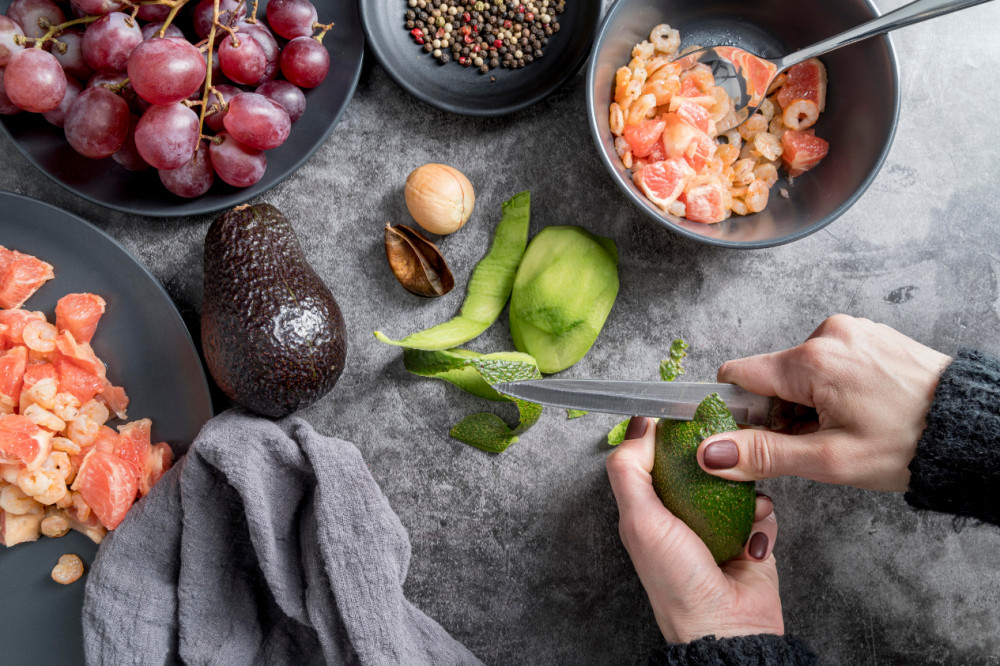
Towards a Balanced diet
Towards a Balanced Diet
Eating to fulfil nutritional needs
While many human beings live to eat, there’s a growing segment of people who eat to live…and that too a healthy life!
So if you fall in the latter category then this blog is for you! Jokes aside, with food shaping our health it’s critical to monitor every morsel which we pop into our mouth on the nutrition benchmark. The current fad is for a balanced diet. But what exactly is this?
Foodism brings to you an explanation of this new concept; the benefits of a balanced diet; the five food groups and suggested healthy options that one can select from each group; along with a draft blueprint of what can be eaten under the ‘balanced diet’ bracket in each meal – breakfast, lunch, dinner and snacks.
So let’s embark on the ‘balanced diet journey’!
What is a Balanced Diet?
A balanced diet is a diet that –
- Contains differing kinds of foods in specific quantities and proportions so that the requirement for calories, proteins, minerals, vitamins and alternative nutrients is adequate
- Offers bioactive phytochemicals like dietary fibre, antioxidants and nutraceuticals that have positive health advantages
- Provides around 60-70 per cent of total calories from carbohydrates, 10-12 per cent from proteins and 20-25 per cent of total calories from fat
Benefits of a Balanced Diet
- Meets your nutritional needs
- Prevents and treats certain diseases like - diabetes, blood pressure, cancer and heart disease
- Helps better manage an illness or condition
- Increases energy levels
- Helps manage weight
- Strengthens immunity system
- Helps fight stress
The Five Food Groups
The United States Department of Agriculture (USDA) recommends eating foods from the five groups and building a balanced plate. According to the USDA’s recommendations –
- Half of a person’s plate should consist of fruits and vegetables
- The other half should be made up of grains and protein
- Each meal should be accompanied with a serving of low-fat dairy or another source of the nutrients found in dairy
A healthy and balanced diet includes foods from these five groups:
- Vegetables
- Fruits
- Grains
- Protein
- Dairy
Vegetables
The vegetable group includes five subgroups:
- Leafy greens
- Red or orange vegetables
- Starchy vegetables
- Beans and peas (legumes)
- Other vegetables, such as eggplant or zucchini
In order to get enough nutrients and keep dietary boredom at bay, people need to choose a variety of vegetables.
Additionally, people must strive to eat vegetables from each of the five subgroups every week.
When it comes to the way of eating these vegetables albeit it could be raw or cooked; however a point to be kept in mind here is that cooking vegetables may take away some of their nutritional value. Moreover methods like deep-frying, can on the contrary add unhealthy fats to a dish defeating the very purpose of nutrition!
Fruits
Nutrition experts strongly recommend opting for whole fruits instead of juice from the fruit. The reason cited is that the latter contains fewer nutrients; moreover the manufacturing process often adds empty calories due to added sugar.
So it is advisable to opt for fresh or frozen fruits, or fruits canned in water instead of syrup.
Grains
Here there are two subgroups:
- Whole grains and
- Refined grains
Whole grains include all three parts of the grain, which are the bran, germ, and endosperm. The body breaks down whole grains slowly, so they have a lesser impact on a person’s blood sugar. Whole grains usually contain more fibre and protein than refined grains.
Refined grains are processed and do not contain the three original components. Refined grains also tend to have less protein and fibre, and they can cause blood sugar spikes.
Grains should ideally make up only a quarter of a person’s plate. Of these at least half of the grains that a person eats daily should be whole grains.
Healthy whole grains include:
- Quinoa
- Oats
- Brown rice
- Barley
- Buckwheat
Protein
Nutrient-dense protein needs to be a mandate part of one’s regular diet; in fact it should make up a quarter of a person’s plate.
Nutritious protein choices include:
- Lean beef and pork
- Chicken and turkey
- Fish
- Beans, peas and legumes
Dairy
Dairy and fortified soy products are a vital source of calcium; it is recommended to opt for their low-fat versions whenever possible.
Low-fat dairy and soy products include:
- Ricotta or cottage cheese
- Low-fat milk
- Yogurt
- Soy milk
The lactose intolerant can opt for low-lactose or lactose-free products, or choose soy-based sources of calcium and other nutrients.
Examples of a Balanced Diet
Basis the above pointers, we’ve prepared a suggestive menu for all the meals in a day i.e. breakfast, snacks (3), lunch and dinner –
Breakfast
One cup cooked oatmeal with one-half cup blueberries, one-half cup non-fat milk, and one tablespoon almond slivers
Two slices turkey bacon
One cup non-fat milk to drink
One cup black coffee or herbal tea
Snack
One cup plain yogurt with one tablespoon honey, one-half cup strawberries, and two tablespoons almond slivers
Hot tea or black coffee
Lunch
Six-ounce baked chicken breast
Large garden salad with tomatoes and onions and two tablespoons salad dressing
One baked sweet potato
One whole-wheat dinner roll.
Snack
One cup raw broccoli florets
One cup raw sliced carrot
Two tablespoons veggie dip or salad dressing
One fresh peach
Dinner
3-ounce serving of baked or grilled salmon
One-half cup black beans
One cup Swiss chard
One cup brown rice
One whole wheat dinner roll with a pat of butter
Snack
One Orange
When it comes to food, each family has their own set of likes and dislikes…and allergies and religious beliefs too! So there’s no standard blue print which can be offered here. But then that’s the best part, isn’t it! You get the creative freedom to devise your own family meal menus – just remember to keep in mind the suggestions for a balanced diet given above.
Related Blogs

Flavours of Mizoram: The Harvest Table You Need to Try
41 Views

Fusion Thanksgiving: India-Inspired Global Feast
84 Views

Food Offerings and Festive Plates of Kartik Purnima
184 Views

The Science of Ferment: Easy Homemade Fermented Foods
134 Views

Zero-Waste Cooking: 7 Dishes That Use Every Bit
134 Views